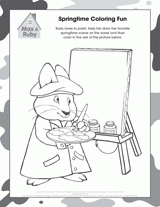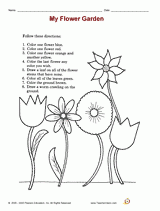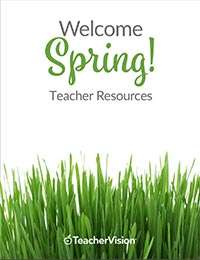Use a School Readiness Activity to provide early language thinking experiences for preschool children that will prepare them to do well in the early grades.
Grades:
Subjects:
Hearing Sounds in Song
Purpose/Skills
- To listen to and imitate phonetic sounds in speech
Materials
None
listen
sounds
silly
funny
Literature Suggestion
Read Oonga Boonga by Frieda Wishinsky, or any other picture book with funny sounds.
Warm-Up
- Get children ready to use their ears and voices.
- Make a variety of silly sounds for them to imitate. Connect some of the sounds to real words. Examples: oonga boonga, rag-a rag-a, oom-pa oom-pa, kitty-jitty, noodle-foodle.
- Ask children to take turns making up funny sounds, and have the group repeat them.
Procedure
- Read the book and talk about the funny sounds in the story and what makes them funny. (They are silly and different from everyday sounds.)
- Ask the children to listen while you sing a song. Explain that they will join you the next time you sing it. Choose a song that emphasizes sound patterns. Examples: "Twinkle, Twinkle, Little Star," "The Ants Go Marching," or "Mary Had a Little Lamb." Add a silly sound to the end of the song. Example: With fleece as white as snow-patoe!
- On the second round, invite the children to join in with you. Give extra guidance to any children who have difficulty with the words.
- Sing the song a third time, to ensure that the sound patterns are clear to the children.
- Help English Language Learners understand what the song means by pointing to pictures in nursery rhyme books or songbooks.
Enrichment
Chant counting rhymes or street rhymes together. Choose verses with strong sound patterns. Examples are: "Rain, Rain, Go Away" and "One, Two, Buckle My Shoe." Teacher Tip: Chanting helps children hear and say the sounds and words clearly and distinctly.
Observation Assessment
- Proficient - Child listens attentively and repeats the song (or verse), matching the words and sounds accurately.
- In Process - Child has difficulty paying attention to the song (or verse) but does sing or say a few phrases with some accuracy in terms of speech sounds.
- Not Yet Ready - Child has difficulty with two or more speech sounds, or makes major errors in attempts to repeat the sound patterns of the song or verse.












